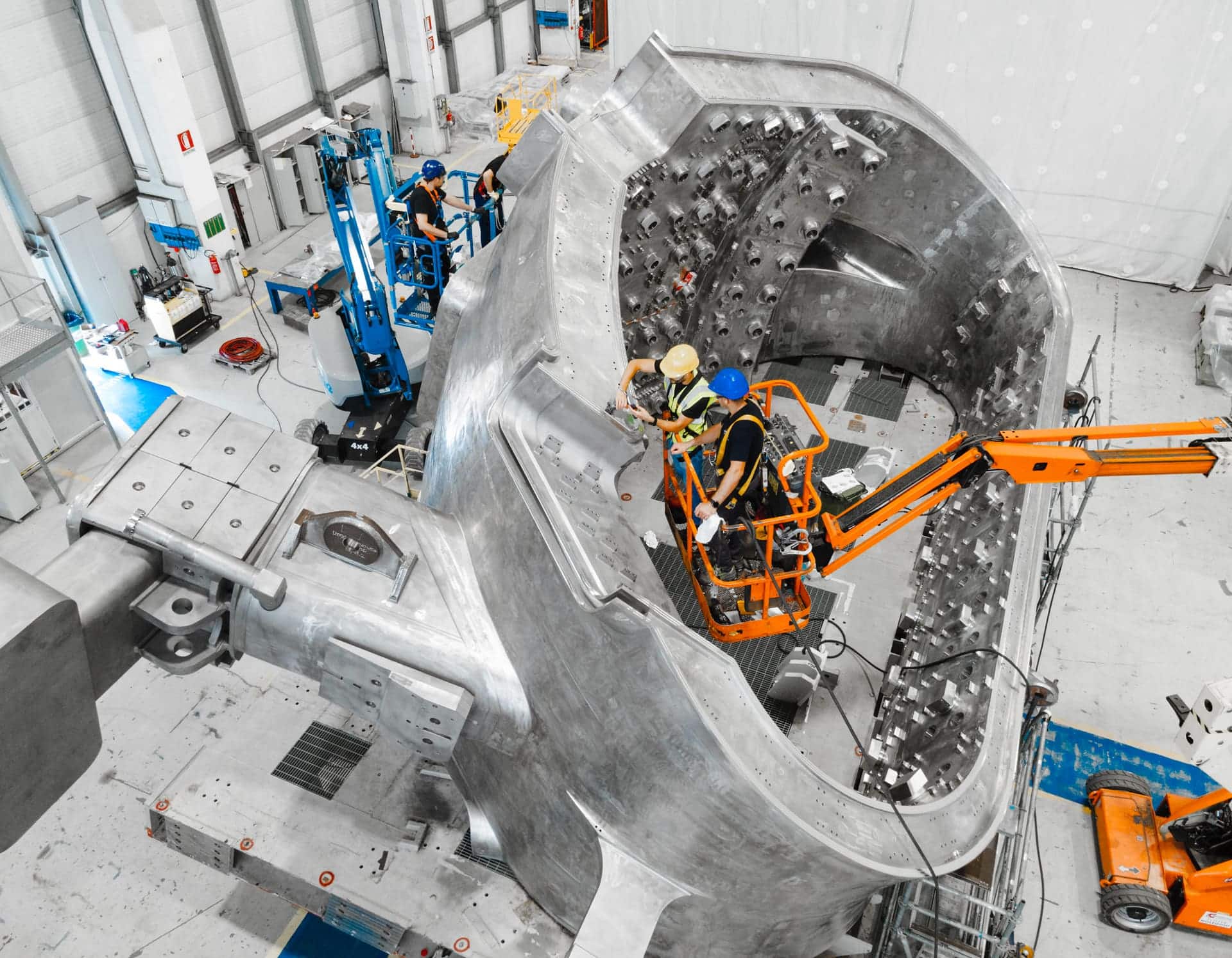The ITER project is progressing toward its goal of producing clean, carbon-free energy through the intensive use of AI to manage millions of data points, improve safety, and accelerate scientific simulations.
In the heart of French Provence, surrounded by pine and oak forests, a site is being constructed that could represent the planet’s energy future. This is ITER, the largest experimental nuclear fusion energy project ever undertaken by humanity. Over 2,000 scientists and engineers from 35 countries are working to make what until recently was considered science fiction a reality: recreating on Earth the same energy that powers the Sun.
However, building this “artificial star” — a machine that will contain plasma at over 150 million degrees Celsius — is not only a physical challenge but also a unprecedented digital challenge. This is why ITER has found an indispensable ally in artificial intelligence. In collaboration with Microsoft, the consortium is applying generative AI, predictive analytics, and automation to move toward its first ignition, scheduled for 2033.
AI for assembling over a million pieces… and much more
“We are building a Ferrari, and all we have for now are bicycles to train with,” jokes Alain Becoulet, deputy director general of ITER. Each day brings a new challenge, from assembling over a million unique pieces to verifying the quality of millimetric welds that must withstand extreme conditions.
To tackle this, the ITER team is using tools such as Microsoft 365 Copilot, Azure OpenAI Service, Visual Studio Code, and GitHub Copilot. These technologies enable tasks ranging from searching over one million technical documents to simulating critical scenarios or designing components with atomic precision.
AI, in Becoulet’s words, is a form of “augmented intelligence”: it is still humans who make decisions, but with multiplied capability thanks to algorithms.
A reactor like a Swiss watch… but the size of a power plant
The centerpiece of the reactor is a gigantic vacuum container in the shape of a donut called a tokamak, where plasma will be generated and controlled. Engineer María Ortiz De Zúñiga from the European Fusion for Energy team leads the design and technical data unit. Her team has implemented AI models trained to inspect critical welds with ultrasound scanners, a task that previously required hundreds of man-hours.
“AI acts as a force multiplier,” she notes. “Once trained, the model can detect weld defects with the precision required for a nuclear component, without fatigue or errors.”
Documentation, purchasing, and inspections: AI also works in the office
According to Jean-Daniel Delaplagne, IT manager at ITER, tools such as Azure OpenAI and Microsoft Copilot are also transforming administrative tasks. A trained chatbot now allows intelligent queries of decades of technical documentation, accelerates CV management, drafts safety inspection checklists, and resolves support requests.
With over 40,000 IT tickets per year, making the history of problems and solutions accessible via AI has resulted in a significant efficiency boost. And all this is happening in an environment where precision is non-negotiable.
The physical challenge: simulating a star on Earth
The contribution of artificial intelligence is not limited to data management. According to physicist Alberto Loarte, responsible for the experimental design of the tokamak, AI is starting to help improve simulations of plasma behavior, an essential field for preventing failures and optimizing energy production.
“We have done fusion before, but never on this scale. Each simulation helps us reduce risks and approach the ignition point in a controlled manner,” he explains.
Thanks to the combined use of AI and high-performance computing (HPC), ITER hopes to get faster answers to problems that would otherwise take weeks of computation. The use of AI is even being explored to interpret simulation results in real time.
Clean, safe, and nearly inexhaustible energy
Unlike nuclear fission, fusion produces no long-lived radioactive waste or risk of catastrophic accidents. ITER is not designed to inject electricity into the grid but to demonstrate that 500 MW of fusion power can be generated with just 50 MW of input, validating the concept for future commercial plants.
For engineers like Ortiz De Zúñiga, who has been on the project for over a decade, the motivation is clear:
“Manufacturing components is already exciting, but knowing that your work is part of a real solution to the energy crisis changes everything.”
With the help of artificial intelligence, the dream of clean, abundant, and secure energy is closer than ever. ITER, more than just a nuclear plant, is a global laboratory where science, engineering, and digital technology come together to illuminate the future. And if all goes well, the Sun will soon have a brother on Earth.
Source: news.microsoft.com

